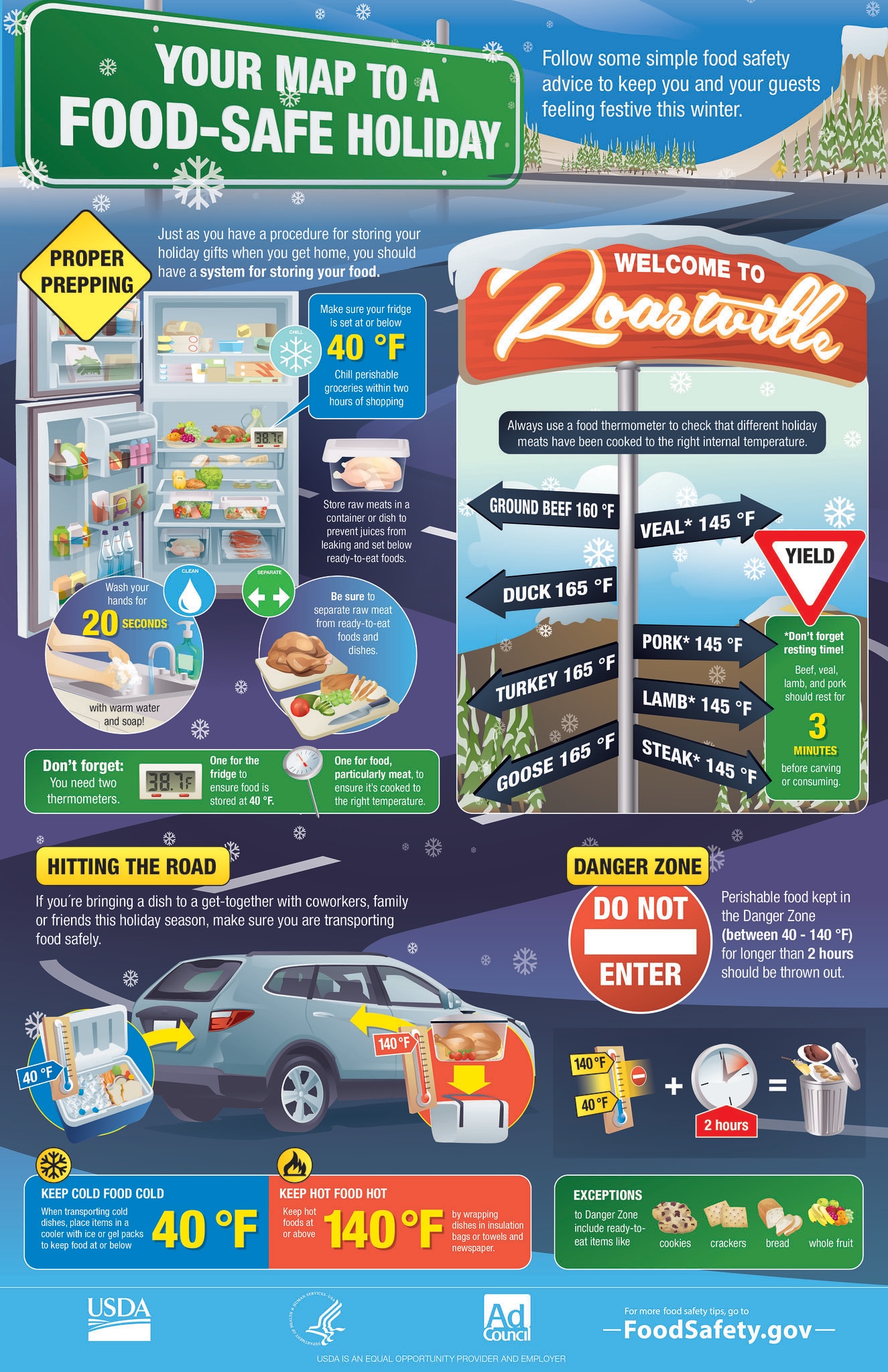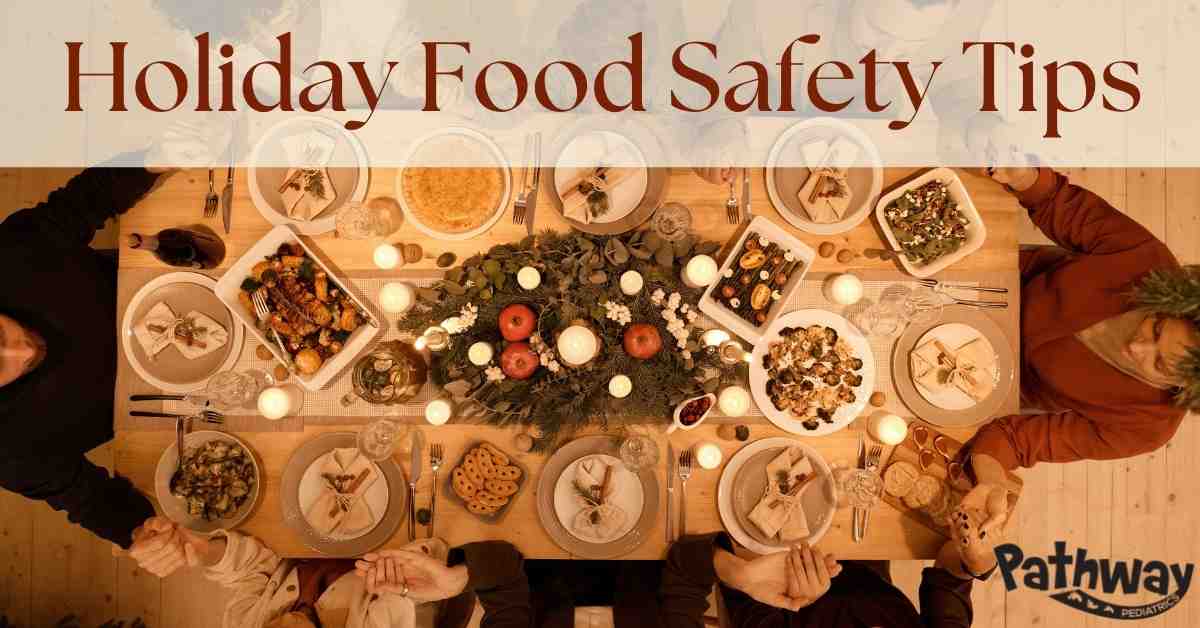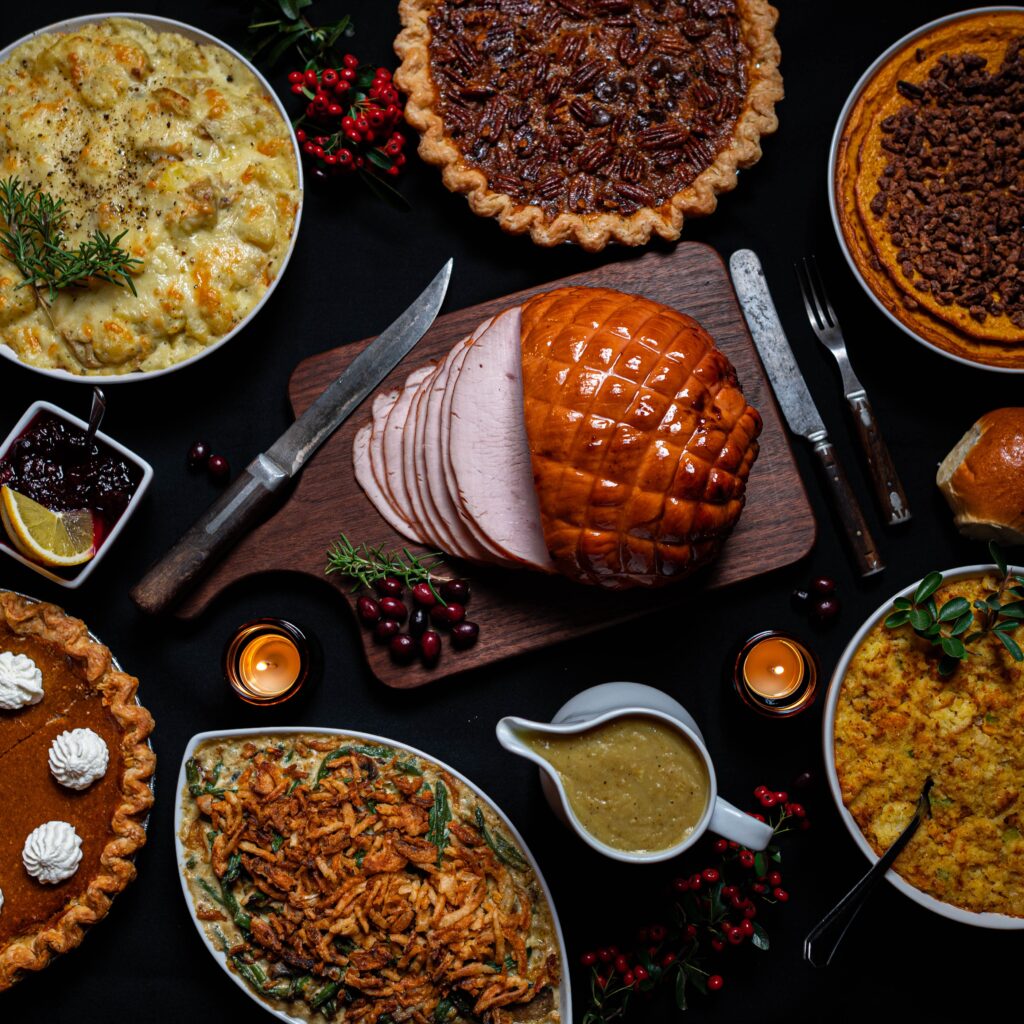Christmas Food Safety: A Comprehensive Guide for 2024
Related Articles: Christmas Food Safety: A Comprehensive Guide for 2024
- Christmas Food Reviews 2024: A Culinary Journey Of Festive Flavors
- Christmas Food Recipes From Around The World For 2024
- Christmas Food Recipes UK 2024
- Christmas Food Recipes Philippines 2024
- Christmas Food RS3 2024: A Culinary Extravaganza
Introduction
With great pleasure, we will explore the intriguing topic related to Christmas Food Safety: A Comprehensive Guide for 2024. Let’s weave interesting information and offer fresh perspectives to the readers.
Table of Content
Video about Christmas Food Safety: A Comprehensive Guide for 2024
Christmas Food Safety: A Comprehensive Guide for 2024

The festive season is a time for joy, laughter, and delicious food. However, it is also a time when food safety risks can increase. With the hustle and bustle of holiday preparations, it can be easy to overlook some important food safety practices. This comprehensive guide will provide you with everything you need to know to ensure that your Christmas food is safe and enjoyable.
1. Shopping for Safe Ingredients
- Choose reputable retailers: Purchase food from stores that have a good reputation for food safety.
- Inspect food packaging: Check for any signs of damage, leaks, or punctures.
- Check expiration dates: Make sure that all perishable food items are well within their expiration dates.
- Keep cold foods cold: Transport perishable foods in insulated coolers with ice packs.
- Separate raw meat and poultry: Keep raw meat and poultry separate from other foods to prevent cross-contamination.
2. Safe Food Handling
- Wash your hands frequently: Wash your hands thoroughly with soap and water before and after handling food.
- Clean and sanitize surfaces: Regularly clean and sanitize all surfaces that come into contact with food, including countertops, cutting boards, and utensils.
- Use separate utensils for raw and cooked foods: This will help prevent cross-contamination.
- Cook food to proper temperatures: Use a food thermometer to ensure that meat, poultry, and fish are cooked to the recommended internal temperatures.
- Cool food quickly: Leftovers should be cooled rapidly to prevent bacterial growth. Place them in shallow containers and refrigerate or freeze within two hours.
3. Safe Storage
- Refrigerate perishable foods promptly: Perishable foods should be refrigerated within two hours of purchase or preparation.
- Store food at proper temperatures: Keep perishable foods at or below 40°F in the refrigerator and 0°F in the freezer.
- Thaw food safely: Thaw frozen food in the refrigerator, microwave, or under cold running water. Never thaw food at room temperature.
- Discard spoiled food: Discard any food that shows signs of spoilage, such as mold, discoloration, or an off odor.
4. Common Food Safety Hazards
- Bacteria: Bacteria can cause foodborne illnesses such as salmonella, E. coli, and Listeria. Bacteria can grow rapidly in warm, moist environments.
- Viruses: Viruses can also cause foodborne illnesses, such as norovirus and hepatitis A. Viruses can be spread through contact with contaminated food or surfaces.
- Parasites: Parasites can cause foodborne illnesses such as trichinosis and toxoplasmosis. Parasites can be found in undercooked meat, fish, or poultry.
- Chemical hazards: Chemical hazards include cleaning products, pesticides, and heavy metals. These can contaminate food if they are not properly stored or used.
5. Special Considerations for Christmas Foods
- Turkey: Turkey is a popular Christmas dish. Make sure to cook the turkey to an internal temperature of 165°F.
- Ham: Ham is another popular Christmas dish. Cook ham to an internal temperature of 145°F.
- Eggnog: Eggnog is a traditional Christmas beverage. Make sure to use pasteurized eggs or egg substitutes in your eggnog.
- Gingerbread cookies: Gingerbread cookies are a festive treat. Make sure to bake them thoroughly to kill any bacteria.
6. Food Safety Tips for Entertaining
- Plan ahead: Plan your menu and shopping list in advance to avoid last-minute stress.
- Delegate tasks: If you are hosting a large gathering, delegate food preparation tasks to others.
- Keep food at proper temperatures: Keep hot foods hot and cold foods cold. Use chafing dishes or ice baths to maintain proper temperatures.
- Wash your hands frequently: Wash your hands thoroughly with soap and water before and after handling food.
- Provide hand sanitizer: Provide hand sanitizer for guests to use before eating.
7. Food Safety for Leftovers
- Refrigerate leftovers promptly: Leftovers should be refrigerated within two hours of serving.
- Store leftovers properly: Store leftovers in airtight containers in the refrigerator.
- Reheat leftovers thoroughly: Reheat leftovers to an internal temperature of 165°F before serving.
- Discard leftovers after four days: Discard any leftovers that have been refrigerated for more than four days.
8. Food Safety for Children
- Supervise children: Supervise children when they are handling or eating food.
- Wash children’s hands: Make sure to wash children’s hands thoroughly with soap and water before and after handling food.
- Avoid raw foods: Avoid giving children raw meat, poultry, fish, or eggs.
- Cook food thoroughly: Cook food to the proper temperatures to kill bacteria.
- Store food properly: Store food at the proper temperatures to prevent bacterial growth.
9. Food Safety for the Elderly
- Weakened immune systems: The elderly have weaker immune systems, making them more susceptible to foodborne illnesses.
- Proper food handling: It is essential to follow proper food handling practices to prevent foodborne illnesses in the elderly.
- Cook food thoroughly: Cook food to the proper temperatures to kill bacteria.
- Avoid raw foods: Avoid giving the elderly raw meat, poultry, fish, or eggs.
- Refrigerate leftovers promptly: Leftovers should be refrigerated within two hours of serving.
10. Food Safety for Pregnant Women
- Listeriosis: Listeria is a bacteria that can cause serious infections in pregnant women and their unborn babies.
- Avoid certain foods: Pregnant women should avoid raw meat, poultry, fish, eggs, and unpasteurized milk and cheese.
- Cook food thoroughly: Cook food to the proper temperatures to kill bacteria.
- Wash fruits and vegetables thoroughly: Wash fruits and vegetables thoroughly before eating them.
- Refrigerate leftovers promptly: Leftovers should be refrigerated within two hours of serving.
Conclusion
By following these food safety guidelines, you can help ensure that your Christmas food is safe and enjoyable for everyone. Remember to practice proper food handling, storage, and cooking techniques to prevent foodborne illnesses. With a little care and attention, you can have a festive and food-safe Christmas celebration.








Closure
Thus, we hope this article has provided valuable insights into Christmas Food Safety: A Comprehensive Guide for 2024. We hope you find this article informative and beneficial. See you in our next article!
